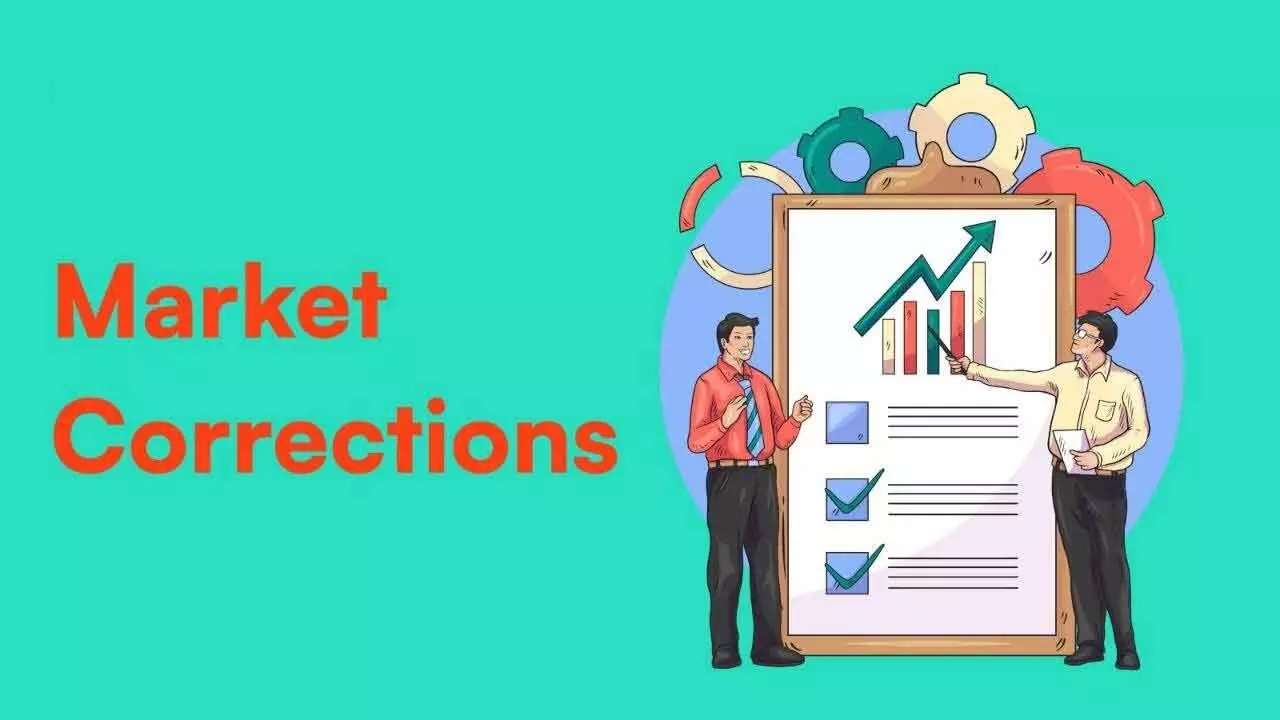Why Market Corrections Are Healthy For Long-Term Investors
The market has witnessed a remarkable rise post-pandemic, but with corrections inevi-table, what lies ahead for investors?
Why Market Corrections Are Healthy For Long-Term Investors

The domestic equity markets have been on a tear since the pandemic crash in March 2020. The market has not witnessed any correction of 20 per cent or more during this period. While 20 per cent corrections are not common, neither are they uncommon, particularly on an aver-age of periods of 5-6 years, though the recent decade (i.e., in the last 10years) we’d wit-nessed only once other than the covid. The broader index, S&PBSE Sensex recorded 20 per cent or more correction in 30 instances in the last 34 years and 12 instances over 20 years.
Interestingly, the reason for larger correction of 20 percent or more in the domestic markets has always been due to the external factors excepting the infancy period of 90’s. However, what is peculiar about the market of the last couple of years is the lack of even 10 per cent correction, other than the recent one. There are 107 instances of market correction of 10 per cent or more in the last 34 years and 48 instances in the last 20 years. A 10 per cent correction is healthy and more of a feature than a bug in the equity markets which cuts the excess froth from time to time and is not a disruptor but aids in the wealth creation.
A 10 per cent correction is quite normal for the markets with an average of more than one in-stance a year excepting the period from Jun ’22 to Dec ’24 where such a correction happened only once, during the current one. Precisely, the reason why the recent correction of just a lit-tle over 10 per cent from the highs has captured and consumed both time- and mind-space of the investors. Despite the limited correction of the broader indices, individual stocks have corrected by a big way. Of the NIFTY 500 constituents, close to 58 per cent of the companies have experienced more than 20 per cent fall from their highs and about 29 per cent of the companies in the range of 10 per cent to 20 per cent. And the rest about 13 per cent of them could beat the index during this period.
The outperformance of the market during the last few years is due to the earnings improve-ment. Across the market breadth, the Earnings Per Share (EPS) of companies have grown at a spectacular rate relative to the last decade, especially post the Great Financial Crisis (GFC). The EPS expansion has rivaled only the best period of Indian economy i.e., during the debt-fueled pre-GFC period. The profit growth of the companies has outpaced the broader eco-nomic performance, GDP.
Moreover, the current growth is synchronized with the deleverage cycle of both the corpo-rates and banks. Neither the banks nor the corporates were never so less levered with the net non-performing assets of banks at multi-decadal lows. The debt/equity ratios of the corpo-rates have reached the pre-GFC levels, resulting in huge operating and investing cashflows. Though the recent GDP growth was primarily driven by government spend, it has paved a fertile foundation for private capex. That’s also the reason why we witnessed the capital in-tense sectors and cyclicals doing extremely well, after more than a decade.
While the overall growth story remains intact, the chinks to the prospects appear elsewhere. The appreciation of USD is a larger concern, not just to India but to the emerging markets (EM), creating a flight of capital across the regions. The high-growing geographies now lack the required capital as the relatively less risky avenue turns attractive. The expectation from the new regime in the US is high and some of the policies are contradictory yet abetting the current scenario. Like the earlier situation, where the dollars were aggressively pursuing the EM, this won’t last forever and the reverse is bound to happen. This would take a few months to fully resolve for the situation to become stable.
Till now, I’ve only narrated the risks, the rewards are even better for the investors who stayed through these periods of volatility. The market highs from these bottoms are a phenomenal journey. For each of the instances mentioned over 20 percent corrections, the returns i.e., the highs from the bottoms have been on average of upwards of two times. Similar is the case for those corrections of up to 10 percent.Of course, it’s not linear and immediate, the time frame varies but the fact is that they tend to bounce back.
I’m not advocating that every dip is a buy for the investors but they should consider the the-sis from their investment horizon and interact with markets accordingly. Critical to investors is to remain invested and adjust their portfolios to the changing the dynamics.
(The author is a partner with “Wealocity Analytics”, a SEBI registered Research Analyst firm and could be reached at [email protected])

